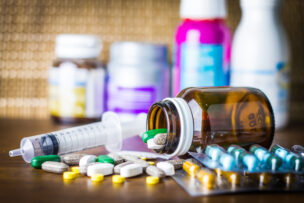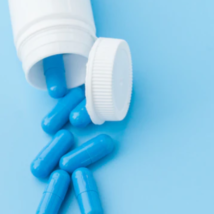According to the news “国際共同治験前の日本人P1は原則不要 医薬局、通知・事務連絡で明確化 | 日刊薬業 – 医薬品産業の総合情報サイト (jiho.jp)” released by NIKKAN YAKUGYO on 26/12/2023, the Ministry of Health, Labour and Welfare in Japan announced on 25/12/2023 that, in principle, there is no need to conduct additional Japanese Phase 1 clinical trials before multi-regional clinical trials (MRCTs) except when deemed necessary. In addition to issuing new administrative communications, the announcement also involves revising and removing previous notices and communications that stipulated the need for Japanese Phase 1 trials before MRCTs. The separate attachment of the new notice dated 25/12/2023, titled “Basic Principles for Conducting Phase 1 Studies in Japanese before Initiating MRCTs Including Japan for Drugs in Which Early Clinical Development is Preceding Outside Japan,” states that Phase 1 trials do not need to be conducted separately for each race, ethnicity, country, or region. It further clarifies that except when deemed necessary, in principle, there is no requirement to conduct additional Japanese Phase 1 trials.
Uncategorized
Alzheimer’s Disease Drug “LEQEMBI” Listed at NHI Drug Price in Japan<Estimated Peak Sales: 99 Billion Japanese Yen>
According to the news article (アルツハイマー病治療薬「レケンビ」20日収載へ…ピーク時売り上げ986億円予測|トピックス | AnswersNews (ten-navi.com)) released by AnswersNews date 13/Dec/2023, the National Health Insurance (NHI) drug price for “LEQEMBI” (lecanemab) has been set, using the cost accounting method, at 45,777 Japanese yen for a 200 mg 2 mL vial and 114,443 Japanese yen for a 500 mg 5 mL vial. The drug is administered at a dose of 10 mg per kg of body weight bi-weekly, and the annual drug cost for a patient weighing 50 kg would be approximately 2.98 million yen. The number of patients treated annually with “LEQEMBI” is expected to peak at 32,000. The peak sales are expected to reach 98.6 billion yen on an NHI price basis in the ninth year of its launch (i.e. FY2031). The NHI drug price calculation was based on the following factors: (1) the drug has a novel mechanism of action; (2) clinical trials have demonstrated clinically significant efficacy, even in patients who have had an inadequate response/refractory to existing treatments; and (3) it is the first drug that has been shown to inhibit the progression of dementia. As a result, a price premium for its usefulness was granted to LEQEMBI’s drug price.
Japan’s Strategy to Attract U.S. Biotech Ventures: Addressing Regulatory Misconceptions and Augmenting Market Attractiveness
The news “厚労省・城医薬局長 米バイオベンチャー誘致でドラッグ・ロス解消「まずは審査の誤解を解くところから」 | ニュース | ミクスOnline (mixonline.jp))” was released by MixOnline on 16/Nov/2023. The article discusses the efforts of Japan’s Ministry of Health, Labour and Welfare (MHLW) to attract U.S. biotech ventures to the Japanese market and mitigate the issue of drug lag/loss. Katsufumi Jo, Director of the Pharmaceutical Safety and Environmental Health Bureau at the MHLW, underscored the importance of dispelling misconceptions about Japan’s pharmaceutical regulatory and drug pricing systems, which have deterred these ventures from entering into the Japanese market. To bridge the gap in communication between Japanese regulatory agencies and global biotech companies, the MHLW plans to establish a representative office of the Pharmaceuticals and Medical Devices Agency (PMDA) in the U.S. to provide accurate information and consultations in English about Japan’s pharmaceutical regulations. This will enable regulatory consultations with PMDA in the U.S., including conducting clinical trials in Japan. The MHLW’s initiative to establish the PMDA’s U.S. office not only aims to reduce drug lag/loss but also seeks to position Japan as a more appealing and advantageous landscape for international biotech collaborations, ultimately benefiting the pharmaceutical landscape both domestically and internationally.
Guideline for “Master Protocol Trials” in Japan
According to the news article “マスタープロトコル試験、年度内にGL案策定へ AMED研究班、「国内環境整備しないとラグ・ロス広がる」 | 日刊薬業 – 医薬品産業の総合情報サイト (jiho.jp)” released by THE NIKKAN YAKUGYO on 11/Oct/2023, a research team of the Japan Agency for Medical Research and Development (AMED) has initiated research aimed at creating guidelines for “Master Protocol Trials”. Drug development has been advancing in Europe and the United States through the utilization of this trial method, yet Japan currently lacks well-defined guidelines in this regard. The lead researcher, Professor Akihiro Hirakawa of Tokyo Medical and Dental University, emphasizes the need for Japan to adapt, cautioning against heightened risks of drug loss in the absence of the required infrastructure. “Master Protocol Trials” is a novel clinical trial method that efficiently evaluates multiple diseases and treatments, and is primarily classified into three categories: “Basket Trials”, “Umbrella Trials”, and “Platform Trials”. Especially in Europe and the US, this approach has been used to develop anti-cancer drugs and treatments for COVID-19. In Japan, efforts are in progress with initiatives led by the National Cancer Center Hospital and the National Center for Global Health and Medicine. The US FDA has already issued guidance for “Master Protocol Trials” in COVID-19 and oncology fields. However, no such detailed guidelines exist in Japan yet. Professor Hirakawa expresses a growing concern that global sponsors might be reluctant to incorporate Japan in their global development plans if clear guidelines and specified considerations for leveraging these trials continue to be absent. This became signifying an urgent call for Japan to formulate similar policies. AMED’s research, slated until the fiscal year 2025, aims to collaborate with related organizations and experts to examine regulatory, statistical, and practical issues of “Master Protocol Trials”. Its goals include establishing guidelines, developing trial designs, and proposing trial operation models. After finalizing the guidelines, the next action will be to collaborate with the Ministry of Health, Labour and Welfare and the Pharmaceuticals and Medical Devices Agency (PMDA) to establish the final procedures.
Chinese Pharmaceutical Innovation Gaining Presence in Japan
According to the news “中国製薬、日本でもじわり存在感 | AnswersNews (ten-navi.com)” released by AnswersNews on 22/Sep/2023, Chinese pharmaceutical innovations are gaining prominence in Japan. In 2021, the anti-cancer drug “Hiyasta” developed in China was approved in Japan. In September 2023, Shanghai-based biotech firm, Haihe Biopharma, applied for gumarontinib in Japan. Takeda Pharmaceutical Company acquired the development and sales rights for the VEGFR inhibitor drug, fruquintinib, from Hong Kong’s HUTCHMED, aiming for obtaining approvals in Japan, the US, and Europe. Chinese pharmaceutical industry is rapidly growing in new drug development. In 2019, BeiGene’s BTK inhibitor, “Brukinsa”, became the first China-developed drug to gain approval in the US, and it is now approved in over 65 countries. The Chinese government strategy called “Made in China 2025” which was initiated in 2015, prioritized the biopharmaceutical sector and promoted innovation in new drug development. As of 2023, the Chinese pharmaceutical market ranks second globally, and four Chinese companies are listed in the top 50 global pharmaceutical companies. Among these companies, Jiangsu Hengrui Pharmaceuticals has marked its footprint in Japan, becoming the first Chinese company to initiate pharmaceutical sales there. Japanese pharmaceutical companies are also actively adopting Chinese innovations. Following Takeda’s agreement with HUTCHMED. EA Pharma has initiated joint research with Nanjing-based TransThera Sciences. In summary, Chinese pharmaceutical innovation is increasing its presence in Japan, and Japanese pharmaceutical companies are intensifying their efforts to incorporate Chinese innovations.
Update on Japan’s Phase 1 Clinical Trials Regulations
As described in the news “国際共同治験前の日本人P1 海外先行品は原則実施不要 薬物動態は可能な限り収集を 厚労省・薬事検討会 | ニュース | ミクスOnline (mixonline.jp)” released by MixOnline on 14/Sep/2023, Ministry of Health, Labor and Welfare will issue a new notice regarding Japanese phase 1 study soon. According to the discussion about the new notice, for drugs primarily developed overseas, there would be no need to conduct additional Japanese phase 1 study before participating multi-regional clinical trials (MRCTs) as long as the safety and tolerability risks for Japanese subjects can be explained and managed. However, it is desirable to collect as much information on the pharmacokinetics in the Japanese population as possible. In the past, Japan’s regulations, initially set in 2007, mandated phase 1 trials for Japanese participants. Many sponsors were concerned about the risk of subsequent additional trial requests, and some of them had even abandoned development. The new notification aims to minimize these obstacles and encourage international collaboration. Of particular interest is if Japan’s participation in MRCTs is possible for orphan drugs and pediatric medicines without conducting any Japanese phase 1 trial. However, not all drugs fit this criterion, decisions will be made on a case-by-case basis depending on the type and characteristics of the drug, especially for drugs with anticipated significant safety concerns. This new notice will potentially bring substantial changes to the pharmaceutical industry in Japan. With easier participation in multinational clinical trials, new drug development and market introduction are expected to proceed more smoothly in Japan.
About 100 Million Yen to Administer “Luxtana”, Gene Therapy Drug, on Both Eyes
According to the news article“遺伝子治療薬「ルクスターナ」両目投与で約1億円…「リットフーロ」など30日薬価収載|トピックス | AnswersNews (ten-navi.com)” released by AnswersNews dated 23/Aug/2023, the Central Social Insurance Medical Council of Japan (Chu-I-Kyo) gave the green-light to the historically high listing price of “Luxturna”, a groundbreaking gene therapy drug developed by Novartis Pharma. Luxturna (generic name: Voretigene Neparvovec) will be used for the genetic treatment of “Inherited Retinal Dystrophy due to Biallelic RPE65 Mutations,” a hereditary eye disease. It functions by addressing the functional deficiency of the RPE65 gene. NHI price for reimbursement of the treatment is calculated using a cost-based method, and a single vial (0.5 mL) is priced at 49.6 million yen (about 350K USD), resulting in the total treatment costs for both eyes of nearly 100 million yen (about 700K USD). Luxturna is expected to reach 500 million yen (about 3,500K USD) in annual sales at its peak, with an estimated five patients receiving the treatment in Japan.
Discussion Just Started About Necessity of Japanese P1 Data to Initiate Global P3
According to the news article “薬事検討会 国際共同P3前に企業責任で複数人種での安全性確認を条件に「日本人P1データ不要」も一考 | ニュース | ミクスOnline (mixonline.jp)” released by MixOnline as of 08Aug2023, the study group operating under the Ministry of Health, Labour and Welfare discussed the necessity of conducting Japanese Phase 1 before Japan’s joining multi-regional clinical trials (MRCTs). Japanese Phase 1 trials were mandatory as of 2007, and a more flexible approach was introduced in 2014. However, there are still many cases where Japanese Phase 1 was required, and there is no clear understanding between the industry and the government regarding conditions where such a flexible approach is acceptable. This issue leads to delays in MRCTs in Japan and raises concerns about “drug loss” risks. Ei Narusawa (Professor at Kitasato University School of Pharmacy), a member of the study group, pointed out that verifying safety in the Japanese population should ideally be done in Phase 3 studies. He suggested, “If companies can thoroughly confirm that there is no difference in safety and PK profiles among different races before the initiation of Phase 3, it might be possible to propose a direction where Japanese Phase 1 is not necessarily required.” A PMDA’s executive officer said that though a definitive standard for deciding the necessity of these trials for the Japanese is complex, it’s feasible to outline the factors that should be considered when evaluating this necessity. Additionally, there were diverse suggestions to change the handling of orphan drugs and to clarify responses based on similar drugs, highlighting the necessity of defining the design of the regulatory framework.
Japan’s Initiative for Streamlined Orphan Drug Designation
According to the news article (厚労省・薬事検討会が議論開始 オーファン指定の基準明確化、早期化で「3割増」と試算 | ニュース | ミクスOnline (mixonline.jp)) released by MixOnline on 11th of July, 2023, the Ministry of Health, Labour and Welfare’s “Study Group on the Drug Regulatory System to Enhance Drug Discovery and Ensure Stable Supply” initiated discussions aimed at clarifying the criteria for designating. The committee broadly agreed to clarify the criteria and accelerate the designation of orphan drugs. The MHLW also estimates that clarifying the requirements for the designation would increase the number of orphan-designated drugs by about 30%. On the other hand, it was also proposed that priority review, one of the preferential measures for orphan designation, shouldn’t be applied to items subject to the relaxed requirements until the PMDA’s review system is fully expanded. The study group will summarize ideas by the end of the year or the end of the fiscal year (the end of March). The committee intends to implement those items that can be put into operation before the summary is announced and to make improvements through notices, Q&A, and any other means.
PMDA to Promote New Drug Developments in Japan by Raising Awareness among U.S. based Biotech Companies about Regulations in Japan
According to the news article “PMDA米国拠点、ラグ/ロス解消が使命 藤原理事長、日本の薬事制度を周知・浸透へ | 日刊薬業 – 医薬品産業の総合情報サイト (jiho.jp)” released by THE NIKKAN YAKUGYO on July 07, 2023, Yasuhiro Fujiwara, the President of the Pharmaceuticals and Medical Devices Agency (PMDA), has announced plans to establish their overseas operation bases in the United States and Asia to disseminate information about Japan’s pharmaceutical regulations. The US base aims to enhance collaboration between regulatory authorities in Japan and the United States, raise awareness of Japan’s pharmaceutical regulations among local companies and stimulate new drug development. This movement is also intended to diminish the “drug lag and loss” issue that is currently becoming a problem in Japan’s healthcare industry. These new overseas bases, planned for Washington, the US and Bangkok, Thailand, are set to start operations in the fiscal year 2024. While PMDA does not have a European base, they dispatch personnel to the European Medicines Agency (EMA) for information exchange. President Fujiwara expressed his intention to strengthen relationships through face-to-face meetings, acknowledging the time differences as a challenge. Furthermore, he emphasized the need for seamless transmission of vital information on Japanese pharmaceutical policies and guidelines to global stakeholders. This ensures more timely and effective communication for those involved in pharmaceutical development. The US base aims to showcase the appeal of Japan’s pharmaceutical regulations, attract the interest of US companies, and redirect their focus towards the Japanese market, thereby contributing to the resolution of “drug lag and loss in Japan.”










